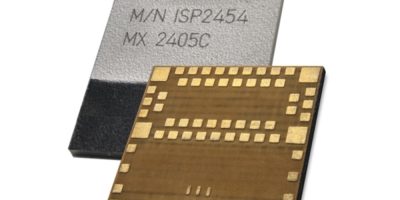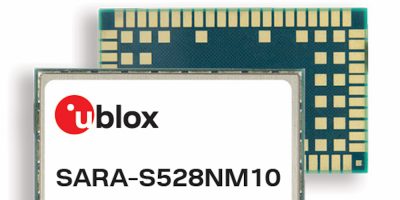Insight SiP is launching the ISP2454-MX module in a tiny package measuring 8 x 8 x 1mm, the smallest package on the market. With extended temperature capability up to 105oC, this device can support next generation Bluetooth based solutions including Angle of Arrival and the new Bluetooth Channel Sounding technology. Based on the new Nordic nRF54L15, this offers improved performance across the board, being based on a 4th generation radio and a double speed microprocessor compared with the nRF52 series-based devices, at a lower cost.
This module can support a wide range of solutions, offering a powerful Arm M33F 128Mhz based processor, and advanced security features with ARM Trustzone. Power consumption is improved in both radioactive and sleep modes. Memory capacity is increased with 1.5MB of storage and 256KB RAM, allowing the largest and most sophisticated applications to be run. This enhanced performance is also offered at a cost advantage over nRF52 based devices, making it equally suitable for price sensitive products.
Despite the advanced features of this device, it is released in Insight SiP’s standard 8 x 8 x 1 mm package and offers a fully integrated solution with RF matching and integrated antenna. Both 32MHz and 32 kHz crystals and DC-DC support for each processor are included, meaning it is a fully functioning Bluetooth node only requiring a power supply to operate.
A full range of peripheral connections is available including HS-SPI, SPI, UART, I2S and others. There is also a software programmable peripheral independent 128MHz RISC processor, allowing alternative high-speed peripherals to be supported. As well as supporting BLE, the module can run Zigbee, Thread and other 802.15.4 based protocols, concurrently with BLE. Protocols stacks and applications run on the real time Zephyr operating system which provides a rich suite of drivers and services.
The ISP2454 RF module is designed to run on a coin cell battery if required. Thanks to the module’s ultra-low power consumption and advanced power management system, the battery can last up to several years.
Initial samples are available now. Full production of the modules will start in 2025. Certification is pending. To help product developers, Insight SiP will offer complete development kits together with sample software that provides everything required out of the box to start developing a solution on day one.







